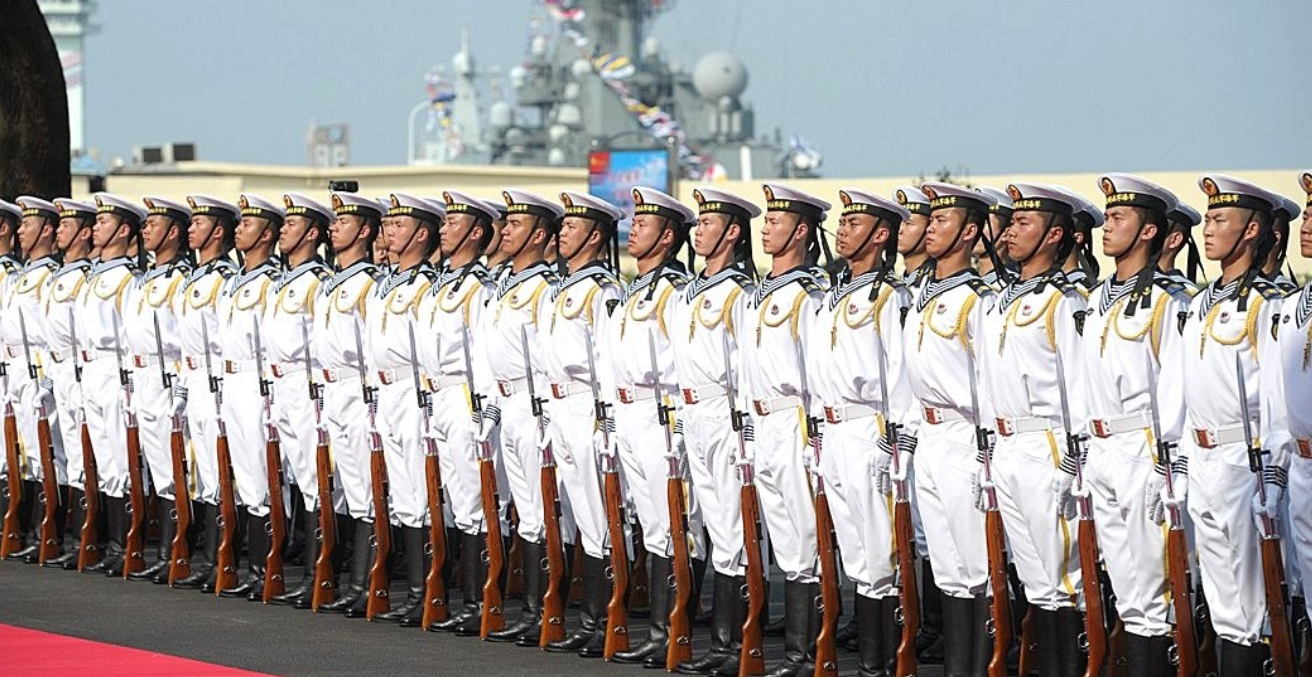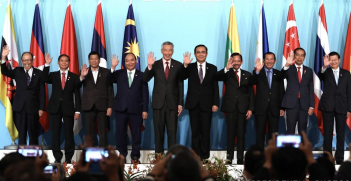Hong Kong Today, Taiwan Tomorrow?

On paper, it appears that China has the means to forcibly reintegrate Taiwan. However, there remain several very real obstacles in Beijing’s way should it attempt to do so.
Recent events in Hong Kong have understandably attracted questions and concerns that Taiwan would be the next item of “unfinished business” on the agenda that China looks to solve, including from Joseph Wu, Taiwan’s foreign minister. While unlikely, China has the motive, and increasingly the desire, to forcibly reintegrate Taiwan.
Why would Beijing want to invade Taiwan?
There is the element of “unfinished business” from the Chinese Civil War. When the Communist forces took control of the mainland in 1949, the Kuomintang (KMT) withdrew their forces and government structures and reinstituted them in Taiwan. From then on, they have claimed, and still constitutionally claim to this day, to be the sole legitimate government for all of China, as the Republic of China. Today, after decades of diplomacy by the mainland People’s Republic of China (PRC), only 15 countries still recognise the Republic of China. China has been planning ways to invade and occupy Taiwan since the KMT’s withdrawal in 1949, and Taiwan has been planning ways to counter any assaults to defend itself from attack. It would be a symbolic coup and Xi Jinping’s crowning achievement if removing this “pretender to the throne” and eliminating their Civil War rival could be achieved, and even more so if it is achieved by next year, the centenary of the founding of the Chinese Communist Party.
The other major reason Beijing would invade Taiwan is that doing so would greatly enhance China’s power. Taiwan is the gateway to the Pacific and sits astride the busiest maritime and air superhighways in the world. In Taiwanese hands, the island is a barrier preventing China from asserting its power, whereas in Chinese hands, Taiwan would be an “unsinkable aircraft carrier,” a launching pad for unrestricted access to the entire Pacific. This would place Japan within striking range of China’s bombers and fighter aircrafts. And with the spoils of war, China would gain access to all of Taiwan’s scientific and technological minds. Taiwanese companies would become Chinese companies. Taiwan’s intellectual property (IP) and secrets would become China’s IP and secrets. Taiwan’s GDP is currently US$590 billion, and its assimilation with the mainland would give the Chinese economy a massive boost.
Forceful reintegration is looking like the more probable eventuality as hopes within the Chinese leadership for a peaceful reunification evaporate. This is happening for two main reasons. In the past, the PRC has used the one country two systems model used in Hong Kong as an example of how Taiwan could be incorporated into the People’s Republic of China. What the Taiwanese are seeing happen in Hong Kong is reducing the appeal of this option.
The other reason is demographics. According to a 2015 survey, 80 percent of people in Taiwan see China and Taiwan as separate entities and support permanent separation if it doesn’t mean war. 43 percent of those under 40 years of age want permanent separation even if it may lead to a war. A 2019 Pew research survey shows that only 35 percent of Taiwanese have a favourable view of China. 66 percent of respondents in the same survey see themselves as exclusively Taiwanese, while a further 28 percent see themselves as Taiwanese and Chinese. This complicates things, as even though Taiwan started as an outpost of the Chinese Nationalists and still claims all of China, it has developed a distinctly separate national identity. These factors make it more likely that Taiwan would drop the Republic of China name and unilaterally declare independence, crossing Beijing’s ultimate red line.
China’s advantage
China’s GDP of US$14.3 trillion dwarfs Taiwan’s US$590 billion. Its population of 1.45 billion completely overshadows Taiwan’s 23.6 million. This means China has more resources and materials at its disposal, allowing it to manufacture and replace war materials at a faster rate than Taiwan. Accurately knowing exact military statistics for any nation is difficult, as for obvious reasons they keep their cards close to their chest. However, rough estimates still provide a useful guide. China’s military budget in 2019 was around US$177 billion, while Taiwan’s for 2020 is around US$13.1 billion. The US military estimates that China’s army has 1,020,000 troops, in contrast to Taiwan’s 140,000. The Chinese navy has a total of 583 vessels, compared to Taiwan’s 109 total vessels. And China’s air force has 1500 fighters and 450 bomber aircraft, contrasted with Taiwan’s 350 fighters and nil bomber aircraft. The superiority in equipment and manpower gives China the capacity to inflict greater damage and absorb greater losses without being adversely affected, and to stretch Taiwan’s defences, allowing for greater tactical flexibility.
Obstacles
Despite the PRC’S seemingly overwhelming military advantage, there are many obstacles in its path. The Taiwan Strait is 80 miles wide at its narrowest point and 255 miles at its widest. It is known for rough sailing with sea states from level four (waves 1m-2.5m high) to level 9 (waves 14+ m high). Not only does this make it harder for weapons on naval platforms to accurately hit targets, thelarger waves can actually flip ships. There are also heavy seasonal rains, tropical storms, gales, and typhoons which lash the straits most months. The Taiwanese Central Weather Bureau states that three to five typhoons over summer is the “usual.” The Chinese remember the lessons of the failed Mongol naval invasions of Japan. After decades of studying the Strait’s climate, Chinese experts have estimated the perfect sea state condition to be level five (2.5m-4m waves), with heavy fog to conceal movements. Only April and October offer these conditions.
Secondly, there will be an increase in activity that will be impossible to hide. This includes increased politburo meetings, building necessary infrastructure, massive purchases of fuel and food, and logistical stockpiling. The rest of the world will notice if global petroleum prices start hyperinflating because China is suddenly buying it all. The same applies with military preparations. Mobilisation of troop and equipment across the country, coastal camps being established, naval concentration congesting ports, air force concentration congesting airspace, and military exercises and training will not go unnoticed. These soldiers will have to be moved in from all parts of the country, including from areas where Beijing currently maintains a strong military presence to impose its will, such as Hong Kong, the South China Sea, the Indian border, Tibet, and the Uyghur Autonomous Region. Diverting soldiers to Taiwan leaves these areas exposed.
In an invasion of Taiwan, Beijing would be deploying a million soldiers. For comparison, D-Day, the largest amphibious landing in history, consisted of 156,000 soldiers and 195,700 naval personnel. There are 13 Chinese ports that would be used as staging points due to their geographical proximity. Between these ports, there are 75,238 registered 50-ton ships that can be deployed by the People’s Liberation Army Navy as maritime militia, and can also be used as transport. These ships are of various levels of quality, and the sailors on board are of various levels of skill, experience, and motivation.
Despite Taiwan being an island with 1,566km of coast, there are just few beaches suitable for an invading army to land. The east coast of the island is mostly cliffs. China has narrowed down its options for landing to 13 beaches, all with various positive and negative attributes (too far from the capital city, not enough connecting roads, etc). Taiwan has also identified these beaches as susceptible to Chinese threat and has heavily fortified them.
These are just some of the obstacles that create very serious impediments to any Chinese attempts at forceful reintegration. The obstacles presented are without either side having fired a shot (or missile) in anger, and without a single Chinese boot on the ground. A worst-case scenario will be the forceful reintegration conflagrating into World War III. Failure to capture Taiwan, or even a stalemate, would lead to the collapse of the People’s Republic, with the majority of the security state being destroyed and leaving the party unable to quash internal dissent.
With great reward, comes great risk. For these reasons, and more, China is likely to continue using salami tactics for the time being. However, invasion continues to remain an option, especially if Taiwan considers crossing the red line and declaring its independence, for as Clausewitz said, “war is the continuation of politics by other means.”
Stjepan Bosnjak holds a Master of Arts (Research) from Victoria University.
This article is published under a Creative Commons Licence and may be republished with attribution.





